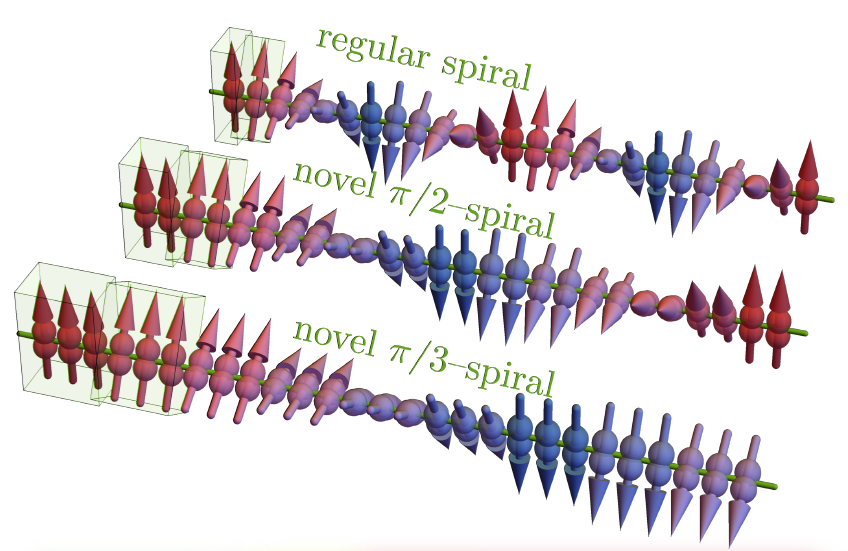
Theoreticians running computer models discovered an unexpected “block spiral” magnetic spin state made of ferromagnetic islands that rigidly rotate.1 If the new quantum state of frustrated magnetism were realized in quasi one-dimensional substructures, its existence could highlight the possibility that other surprises may remain to be revealed by careful exploration of realistic models using unbiased computational methods.
Powerful computers and algorithms allowed scientists to calculate the ground-state properties of challenging low-dimensional models. Several orbitals were considered, and Coulomb interactions were included. A complex phase diagram was unveiled. In particular, they identified a region containing spins stably aligned in blocks of two or three, in which antiferromagnetic and ferromagnetic tendencies compete. These correlated spins form a rigidly rotating arrangement dubbed a “block spiral.” This state had never been observed before. The new spiral state exists in the orbital selective Mott phase, in which one orbital is insulating and the others are metallic. Discovering the existence of this predicted spin state in real materials, such as iron-based chains or groups of chains called ladders, could advance understanding of topological effects and exotic physics in promising materials.
Related Publication:
J. Herbrych, J. Heverhagen, G. Alvarez, M. Daghofer, A. Moreo, and E. Dagotto, Block-spiral magnetism: An exotic type of frustrated order, Proc. Natl. Acad. Sci. USA 117, 16226 (2020).



